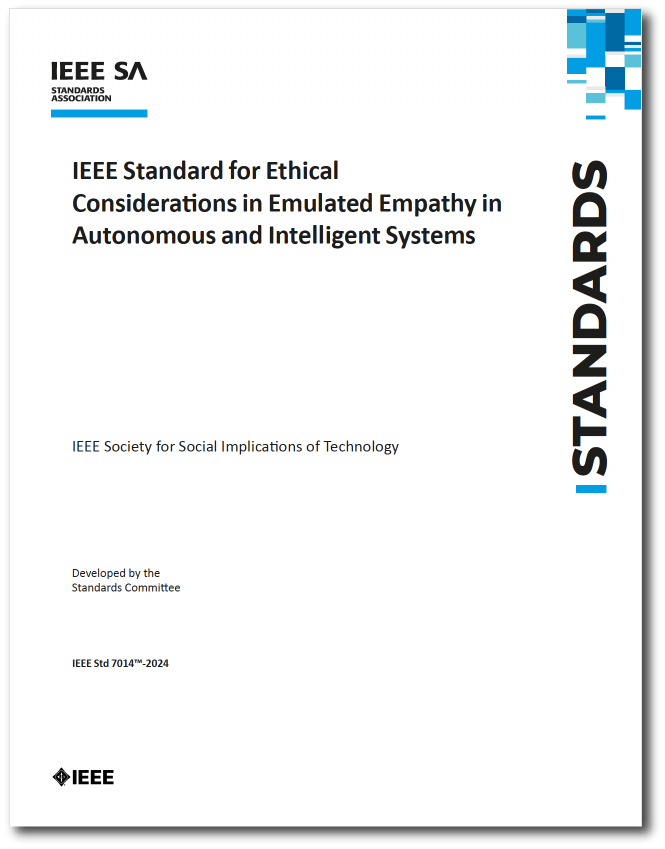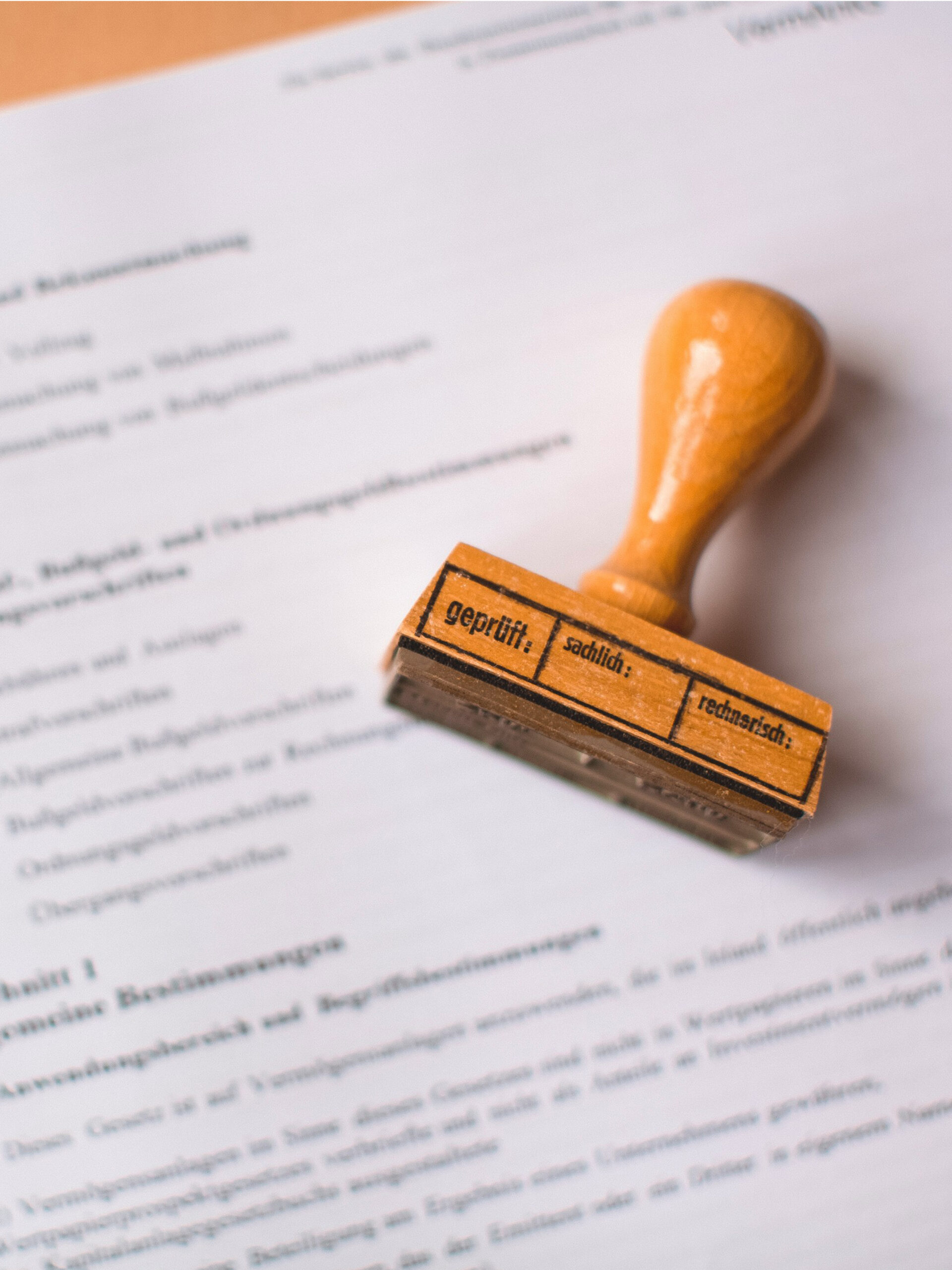IEEE 7014
Standard for Ethics of Empathic AI
Resources for the IEEE 7014-2024 Standard for Ethical Considerations in Emulated Empathy in Autonomous and Intelligent Systems.
This digital resource kit was created by some members of the IEEE P7014 working group, which drafted the original IEEE 7014 global standard for the ethics of empathic AI. Our mission is to support awareness and adoption of the standard, for all stakeholders, and develop improved versions of IEEE 7014 in future.
The standard itself is available for purchase from IEEE here or free to access (for individual use) here.
We operate as a member-based community of global experts who have contributed to the development of the standard. Our backgrounds are diverse, across industry, academia, policy and civil society. We’re here to help you get the information you need, or access an expert if desired.
And we want your feedback to help with our mission!
Get behind the scenes of IEEE 7014


Meet IEEE 7014-2024
Published on 28 June 2024 after five years of development by the IEEE P7014 working group, the IEEE 7014-2024 standard provides both mandatory (“shall”) and recommended (“should”) statements for those developing or managing empathic AI systems (e.g. emotion AI, affective computing, etc.).
Access the standard
The standard is available for free download via the IEEE Get Program (for individual use only) or via the main IEEE standards library for all other uses.
Anatomy of the Standard
Overall structure
Broadly speaking, the structure is divided into three main sections:
- Context: 7014 provides more background information than a typical standard, to orient the reader with key information around the standard’s scope, audience, ethical concerns, differentiators, etc.
- System life cycle processes: The main body of the standard follows a complete system life cycle, through development, deployment and decommission. This is the core content, where all of the standard’s normative statements (i.e. “rules”) are contained.
- Annexes: Besides the standard bibliography, the annexes provide examples and use cases, a background on the science of emotion, affect and empathy, and a list of the required materials for conformance to the standard.

A system life cycle approach
Aligned with existing AI system life cycle process standards (ISO/IEC 5338, ISO/IEC/IEEE 12207, and ISO/IEC/IEEE 15288) each “life cycle process” addresses a specific part of the system life cycle, or a specific ethical theme/issue. The processes are divided into three “high-level processes” that are roughly chronological within the system life cycle. However, many processes deal with issues that must be addressed at multiple points in the life cycle or continuously throughout it.
Here is the full list of system life cycle processes in the standard, accompanied by a few key attributes to highlight how conformance to the standard works for organizations:
1. Organizational project-enabling processes
- Acquisition of required skills, learning, and knowledge
– Requirement to develop understanding of the underlying issues of emotions, empathy and the technology.
2. Technical management processes
- Contribution to human flourishing
– Requirement to demonstrate wellbeing outcomes, not just risk, and publish a wellbeing impact assessment. - Risk, issue and impact management
- Transparency, interpretability, and explainability
– Substantial requirements for system transparency, including “ethical explainability” to publish reasoning for the developer’s approach. - Agency and autonomy
- Context and diversity
– Requirement to demonstrate consideration of system context-of-use and diversity issues relating to empathy and race, culture, etc. - Quality assurance
3. Technical processes
- Stakeholder needs and requirements definition
- Security, privacy, and consent
– Includes strong requirements for appropriate, informed consent. - Data acquisition and management
- System training
- Modeling of affect or empathy
– Requirements to explain the choice and method of affective modeling, and to provide “truth in labelling” to alert people that empathic modeling is in action. - Ongoing monitoring and validation
- Decommission and disposal
Ways to Participate

Conform to IEEE 7014
Become an early adopter of IEEE 7014 by reviewing the conformance of your product or organization with the standard. Reach out and we can collaborate with you on this.

Create ethical standards
The IEEE and other standards development organizations are always seeking input from a diverse range of interested parties. Check out the IEEE Global Initiative on Ethics of Autonomous and Intelligent Systems – or contact us for info.

Spread the word
Ethical standards could be a major step to securing a sustainably safe future for planet and people. Help us share the message of standards and responsible AI.
Associated Projects
IEEE P7014.1
Soon after the completion of IEEE 7014, a new project was launched to develop IEEE 7014.1 Recommended Practice for Ethical Considerations of Emulated Empathy in Partner-based General-Purpose Artificial Intelligence Systems. This recommended practice addresses the emerging issues in the powerful new general-purpose AI systems, where empathy emerges between humans and their AI partners.
Harmonization with other bodies
As a global standard addressing ubiquitous technology, IEEE 7014 has broad relevance. We are keen to explore harmonization, integration and interoperability with other standards development organizations, governments, policymakers, sectoral bodies, watchdog organizations, and any other appropriate entities or documents.
This is not an IEEE website. It is owned and managed by an independent community of people who contributed to the creation of IEEE 7014.
